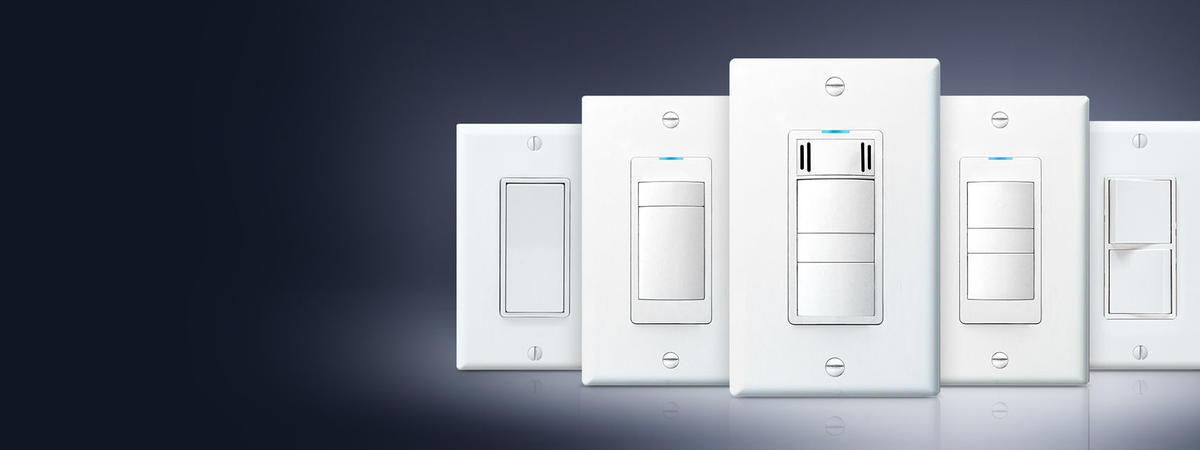VENTILATION CONTROLS & SWITCHES

Ventilation Control Devices: Timers, Sensors, and Switches Beyond simple on-off switches, ventilation control devices allow you to fine-tune a ventilation strategy to match the indoor air needs of bathrooms, kitchens, craft rooms, or the whole house. To achieve the best indoor air quality in your home, ventilation is necessary. Intentional mechanical ventilation allows you to interact with the ventilation process, as you direct the system to remove pollutants from areas of concern, like excess moisture from bathrooms or accumulated volatile organic compounds (VOCs) from a craft room. Selecting a suitable control that runs your ventilation system at the proper time and duration will ensure that both your health and the health of your home are protected in the long run. Automated control devices are critical in hospitality situations such as hotels, resorts, assisted living, and student housing, where the building owner pays for the power and repairs to bathrooms with moisture damage. Hotel guests typically do not turn off lights or bath fans, which can not only lead to higher energy costs, but potential mold and mildew issues. Bathroom vent fans with automatic lights and condensation sensors can save hotel owners money, headaches, and down time during renovations.
Find a control strategy that matches your needs. Selecting the best ventilation strategy for your situation means honestly assessing your needs. Are you in a warm, humid climate? What kind of energy performance are you looking for? Do you live alone, or do you share your home with children and pets? How much time do you spend in your home? Different lifestyles place different demands on the ventilation system. A single adult requires less ventilation than a busy family of five with pets. That family of five may be too busy to spend time interacting with controls with manual timers which work fine for the single adult. Manual controls require you to activate the ventilation fan when needed The basic manual control is an on/off toggle switch. Pros: This option allows people who are particularly sensitive to indoor air quality to manually control and maintain their comfort level. Cons: The system requires direct interaction to be turned off and on, so some people may not sense the need for ventilation and fail to use the system. Shower curtains, towels, walls and cabinets retain moisture long after you have finished and left the bathroom. A delay timer continues to evacuate moisture and odor long after you're gone. Delay timers have a wide range of options, from 30 seconds up to 60 minutes for the desired delay effect. Delay timers give you the freedom to specify ventilation run time.
There are two basic types of manual timers suitable for intermittent bathroom ventilation. The less expensive are known as crank timers, which are spring-wound. Electronic timers are more decorative and expensive but allow you to select the time duration with the push of a button. Electronic timers also incorporate quiet electronic controls. Speed controls allow you to set the desired speed (airflow) of a ventilation device. Speed can be controlled either continuously or in steps. A potential issue is that speed controls can cause undesirable noise when working in conjunction with the fan's AC motor. Speed controls cannot be used with DC motor fans. Automatic controls can be full or semi-automatic An example of a fully automatic control is a 24-hour duty cycle timer that is programmed to cycle on and off over a 24-hour period. A semi-automatic control is a control that has an override switch. An example of a semi-automatic control is an occupancy sensor with a manual on/off override.
Occupancy sensors are for intermittent ventilation. The ventilation system will operate without having to rely on your interaction. The ventilation system will remain "on" and continue working for a period of time after you have left the room, much like a delay off timer. Condensation Sensors are the most current and accurate technology available to help prevent mold and mildew in the bathroom. Condensation Sensors measure both temperature and relative humidity (RH) to anticipate when water droplets, or condensation, will form. The Condensation Sensor will turn on the fan automatically to remove moisture – so the control works automatically whether you live in Alaska or Florida. Panasonic offers both wall-mounted and fan-integrated condensation controls. Simple (RH) controls have a few disadvantages. One disadvantage is that seasonal changes in outdoor relative humidity necessitate seasonal readjustments to function optimally. Another disadvantage of a humidity control is that they are often mistaken for thermostats and set at 70 and never adjusted. Finally, many RH detectors do not have accurate set-points so the humidity levels fluctuate higher or lower without turning on the bath fan. Please note that any fan controlled by an RH Detector or Condensation Sensor does not automatically remove odors.
• WhisperControl Condensation Sensor Plus has Intelligent and advanced sensor technology monitors humidity and temperature to anticipate dew point, automatically operating the fan to control moisture.
• WhisperControl Pre-set Countdown and Hourly Timer has a Pre-set fan timer to 5-15-30-45 or 60 minutes. When the fan turns ON, the timer will run the fan for the selected period of time then shut the fan OFF automatically for you. • Eco switch offers single, double, triple, and quad functions allowing complete customization for all Panasonic vent fans. Commercial grade quality at residential grade pricing.